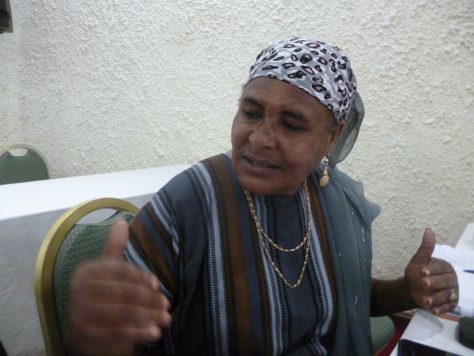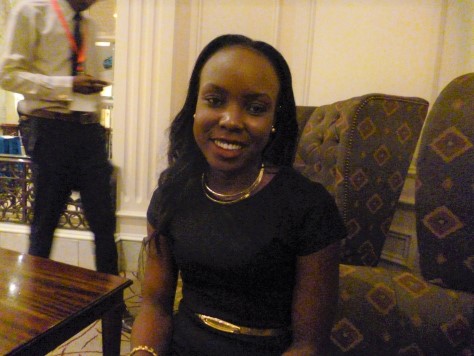
|
Getting your Trinity Audio player ready...
|
By Clifford Akumu and Mary Mwendwa

“You are dead people walking. You do not qualify for any assistance or funding from this county. Why would we fund the dead?” These are the very painful words that tore apart Amina Kabale, a woman in her middle age living with HIV/AIDS in Marsabit County when she and her colleagues went to seek for an HIV/AIDS funding at their county government offices with a proposal.
The proposal, according to Amina who is aged 59-had elaborately detailed measures that were geared towards empowering the population on fighting the virus. However, things turned out nasty after they were referred to as dead people when they sought for funding about a road safety project that would have seen them generate extra income.
“These were the harshest words of discrimination i have ever heard in my life. As a group,we were so depressed with the statement that came from our leader, someone we look up to , someone we thought could understand our plight. HIV does not kill so long as you are on treatment, we live just like other people.”recalls Amina amid tears. Sadly, Amina and her group did not further any efforts to do the application for the tender, they later discovered another non-government organization was awarded the same tender. Something that hurts them to date.

According to Kenya Aids Indicator Survey 2012, Marsabit County was among counties that recorded the lowest prevalence rates in the country. Sadly,this is where people living with HIV like Amina face the worst forms of stigma. Amina together with her group members of Dhuradhema Self Help group experienced stigma from people they have confidence would protect and offer them support as people living with HIV/AIDS.
Stigma and discrimination not only rears its head in northern Kenya, but experienced across all regions though varies by magnitude.
Thomas Kiema ,Assistant Chief, Vote Sub location in Kitui County in Kenya confirms that stigma is a big problem in his locality.
“Stigma is one of the biggest challenges in fighting HIV in this region of Kitui. People are not informed that much, they perceive when you declare your status you are a disgrace to the community”
Kiema adds “As a chief I try to educate people during Barazas on issues of HIV prevention and more so discrimination and stigma which makes many fear to go for testing hence when infected they leave a heavy burden of vulnerable children in the community”
Kenya Aids Response Progress Report 2014,paints a grim picture in the fight against HIV/AIDS . According to the report,for every 100 people , 27 are infected with HIV/AIDS in Homabay County, Kisumu County 19, Siaya County 17 compared to 13 in Migori County. The same report similarly reveals that, for every 100 people in Kitui County five are infected with HIV/AIDS while in Makueni County in every 100 people six are infected with HIV/Aids both in the Eastern part of Kenya.
Interestingly,despite the low prevalence rates in Marsabit County, people living with HIV/Aids like Amina experience highest forms of stigma. Stigma associated with HIV /AIDS is not only witnessed by Kabale’s group but at least anybody living with HIV in Kenya has had a story to tell on issues related to stigma and discrimination. Although, we are in a society that is full of awareness and information around HIV/AIDS but stigma is still a giant that needs to be fought .

According to Barbara Akinyi, Legal Officer, HIV /AIDS Tribunal they have handled over 200 cases around stigma and discrimination since the tribunal started operating in 2012. “So far we have heard over 70 successful cases and with another 50 cases that are on-going.”
Barbara reveals the kind of tribunal cases they handle ; “Discrimination at work places, churches and Health insurance companies that have discriminative policies are majorly what we deal with. Interestingly cases from faith based institutions especially churches are increasingly being reported. Mostly church workers come to us after they face discrimination after their HIV status are known to their leadership. This is a shocking trend because the church symbolizes solace yet religious leaders frequently reinforce stigma and discrimination of people living with HIV”.
Similar story is revealed by Mary Makokha , from REEP , a non –government organization that champions for the fight against HIV /AIDS in Busia County who encountered a physical beating by a faith leader when she went to distribute condoms at a church setting.
“I was slapped by a priest and told to let the people die but desist bringing condoms in church”she reveals.

“Living and fighting against HIV comes with its own challenges, but I am determined to make a difference in lives, I fight for children’s rights, widows and general human rights abuse within Busia, I have seen fruits and I will not stop, that is where my passion lies.”confirms Makokha.
Data from World Bank reveals there has been a steady increase in Anti Retroviral Therapy uptake among people living with HIV /AIDS since 2010. For example In 2010 in every 100 people 32 were on ARV treatment , similar trends were noted in 2014 -2015 where in every 100 , 60 had enrolled for ARV treatment. With stigma and discrimination taking its toll on people living with HIV , efforts to change attitudes towards people living with the HIV virus is critical.













